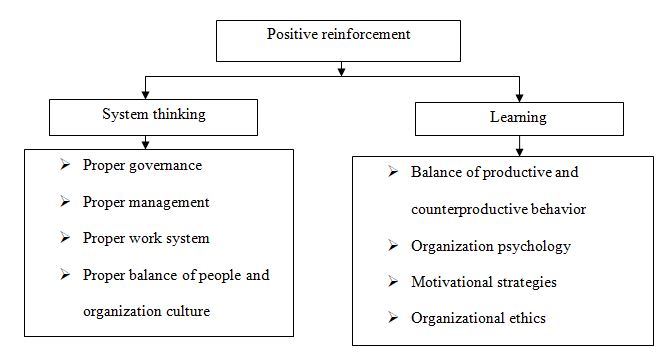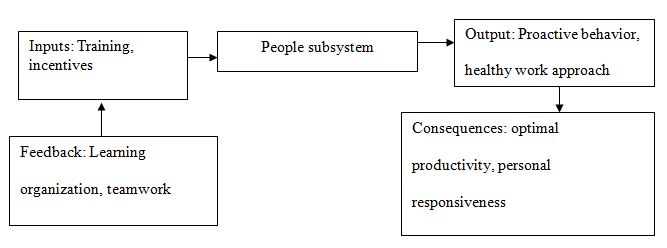Abstract
The success puzzle for organizational change implementation management strategy delivery operates on the ability to balance the soft skills that determine organizational principles.
Besides, defining the value of the business, determining requirements, clarifying the vision, building teams, mitigating tasks, resolving issues, and providing direction complete the response projections, which shall be addressed in the proposed change that involves improving the performance of the McDonalds Company and enhancing its customer focus. Change planning is an important policy that aims to promote long term success in change objectives. The proposed change will involve improving efficiency and employee performance to reverse the current trend of reduced sales.
Organization Change Environment Needs
McDonalds Fast Food Company has been in operations for more than two decades. The company is known for fast food products such as burgers, hamburgers, fries, and soft drinks, among others. The company is a global leader in the fast-food industry (Vickers, 2005, p. 27). The McDonalds Company has more than 500 restaurants across the world. These restaurants are either corporations or partners. McDonalds’ sales have dropped in the recent past. The company needs to improve its performance and enhance customer focus.
The current problems at the company cover a wide range of issues from the executive leadership at the top of the organization, the product, and service delivery, and to the customers as well as the marketing strategies. Thus, there is an urgent need for performance improvement and enhancing customer focus in order to ensure business sustenance.
The poor performance of the customer-centricity strategy has been attributed to serious competitors who seem to have copied the company’s strategies and have been successful in implementing them. Specifically, these competitors are poaching the company’s best salespersons and are away ahead in offering customized services to their clients (Liu, Liao, & Peng, 2005, p.217). Though the customer-centricity strategy is healthy, the implementation process was poorly organized and hurriedly integrated in the marketing structure despite the sentiments of the sales staff.
The current customer-centricity strategy does not include finer details of implementation modules and success reporting in the face of other business dynamics that did not have anything to do with the customer’s demands. For instance, the expansion strategies adopted in the year 2010 were poorly informed since proper research on their viability had not been done.
Coupled with the market economic climate swings, the company is facing the fear of possible breakdown due to stiff competition. As a result of competition and customer changed preferences, the current financial performance in terms of sales is very dismal. In addition, the poor communication system between policymakers and implementers have affected the marketing strategies for the company as the sales support team seems misinformed on the scope and requirements of successful sales. The above dilemma presents an ideal environment for implementing the proposed change (Vickers, 2005, p.29).
Change Management Pan
Theoretical Perspective
Positive Reinforcement Theory
Leadership qualities evoke a modification of behavior in other people. It produces a positive reinforcement to people’s ideas and performance. It occurs due to the positive effects of leadership. It provides a suitable stimulus to evoke the best performances of people (Carson, 2006, p.397). With reference to the McDonalds Corporation, positive reinforcement may be applied, as indicated below.

Contingency Theory
The Fiedler contingency model describes a leader’s ability on the basis of the contingency of the situation. There are two kinds of leaders, according to this theory. The first are those that develop a good relationship with their people to deliver a task. The second are those that are only oriented towards the task at hand. They make the accomplishment of the task as their primary aim and take all the steps towards the achievement of this goal (Winchester, 2006, p.561). With reference to the McDonalds Corporation, positive reinforcement may be applied, as indicated below.

Focus Performance Management
Through focus performance management, the HRM personnel of the McDonalds Fast Food Company will be in a position to create clear goals on performance appraisal, manage a positive feedback channel, and offer continuous and systematic coaching to ensure that employees perform at optimal productivity level.
Thus, the best way to motivate the employees is by giving them responsibilities for achieving something and the authority to do it in their own way, as discussed by the equity theory of change management. Through this approach, employees will be empowered, and they will feel trusted and valued by the management personnel and the company (Carson, 2006, p.398). Reinforcing positive employee behavior will improve the current performance of the company, as discussed in the table below.
Reinforcing Positive Employee Behavior
(Source: Self-generated)
Planning of the Proposed Change
Strengths and Weaknesses of the Proposed Plan
Sustainability of the proposed change guarantees the better performance of the McDonalds Company. Its benefits are tangible and non tangible in running the organization. Therefore, managers should include these practices in the strategic plan in the change. However, this may prove challenging due to a number of reasons. Implementing sustainability may require an overhaul of the usual way of carrying out business for the McDonalds Company. However, managers can change some internal business processes upon receiving approvals from stakeholders. These changes may not be approved hence hindering implementation.
The management may lack experienced expertise required for fast track implementation of sustainability. This hinders implementation. Finally, management needs to strike a balance between reputation and business and implementing sustainability (Appelbaum, Bartolomucci, Beaumier, & Boulanger, 2004, p.19). This occurs when the sustainability project affects a group of people, as is the case in the McDonalds Corporation. Thus, the management may choose not to implement the sustainability project so as to protect the reputation of the business.
Solutions to the Challenges in the Proposed Plan
Communication with employees should be done early in the decision-making process. The message should be meaningful and accessible. This should be done throughout the entire three months of the change implementation. The consultation needs to be inclusive, well documented, communicated, and balanced within a suitable follow-up process. The negotiations and partnerships in the change process should be in the best interest of the stakeholders.
There is a need to establish reachable and reactive ways for the employees to raise distresses and complaints about the proposed change throughout the three months of implementation. Lastly, there is a need to report frequently to the stakeholders on the general performance of the proposed change. The dynamic essence of change proponent should not facilitate any state of quagmire or conflict as the unnecessary pressure associated with change should be integrated in a more consultative, proactive, and structure system for managing the proposed change of the McDonalds Company (Conceicao & Altman, 2011, p. 41).
Results Measuring Process
In order to present an alternative but flexible change plan, the process should be able to allow the McDonalds Company to plan for future desirability and be able to achieve them while responding to the rising circumstances. Being cyclic in nature, it operates on the perception that management of change in an organization is an interactive process. Direct, as the first dimension deals with making an alignment.
It ensures that all the objectives are thought in the right way and then articulated appropriately to create a platform on which the other four dimensions will rely and operate. In the case of the proposed change at the McDonalds Company, the task of the implementation committee should be in a way that it is evidenced both to the internal and external stakeholders. As an exemplary behavior, it needs to be incorporated into the management system in order to be in continuous evaluation. Achievement of these factors will only occur if the behaviors of the employees are clearly defined and described appropriately (Cardenas & Crabtree, 2009, p.61).
Translation of both direction and vision strategies towards operations that require description is the second dimension. Operational strategies are plans that ensure functions are well articulated as required by every section of the business. Thus, the implementation committee of the McDonalds Company should embrace the four key enabling strategies which include strategy towards resourcing, strategy for managing performance, rewarding strategy and final strategy to ensure proper communication in the organization within the three month period (Conceicao & Altman, 2011, p. 38).
Define forms the third model the management has to adapt to ensure organizational change. This approach, though mostly ignored by most of the organization managers, is crucial in the ongoing processes within the organization. Thus, the McDonalds Company should ensure that the change encompasses various aspects such as procedures, policies, and processes that ensure implementations in the businesses are fulfilled. Delivery of the strategies is the fourth strategy that the management should strive to embrace.
It ensures that consistency in implementing overall values and visions of the organization is quantifiable and within reach. Reflectively, depending on the organization’s management decision-making process, it may not guarantee commitments to its implementation (Hofstede, 2009, p. 548). This strategy calls for communications to appropriate models demonstrated through behaviors as displayed by the employees and the change implementation committee of the McDonalds Company.
In the fifth position is the dimension that ensures the development and is placed above all requirements to ensure that there is appropriate monitoring of the processes. The above elements will be applied to the McDonalds Company’s proposed change. The feedback tracking success measurement is summarized in the table below.
Conclusion
In conclusion, from the whole aspect of organizational management change, the five outlined dimensions are normally cyclical in nature. They create a link to all factors that will contribute to change in the Macdonald Corporation.
References
Appelbaum, S., Bartolomucci, N., Beaumier, E., & Boulanger, J. (2004). Organizational citizenship behavior: A case study of culture, leadership and trust. Management Decision, 42(1/2), 13-43.
Cardenas, J., & Crabtree, G. (2009). Making time for visionary leadership. College and University, 84(3), 59-63.
Carson, M. (2006). Saying it like it isn’t: The pros and cons of 360-degree feedback. Business Horizons, 49(2), 395-402.
Conceicao, S. C., & Altman, B. A. (2011). Training and development process and organizational culture change. Organization Development Journal, 29(1), 33-44.
Hofstede, G. (2009). Cultural constraints in management theories. Academy of Management Executive, 7(1), 81-94.
Liu, S., Liao, S., & Peng, C. (2005). Applying the technology acceptance model and flow theory to online consumer behavior. Information System Research, 13(2): 205-223.
Vickers, M.R. (2005). Business Ethics and the HR Role Past, Present and Future HR. Human Resource Planning, 28(1), 26-32.
Winchester, M. (2006). Positive and negative brand beliefs and brand defection/uptake. European Journal of Marketing, 42(6), 553-570.